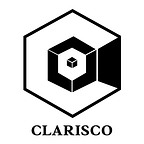IDO (Initial Dex Offering)
Nothing but, An IDO (Initial Dex Offering) is an extension of ICO (Initial Coin Offering) started with an ICO is one among the lead developments of (IEO) i.e. Initial Exchange Offering, (STO) Security Token Offering.
That IEO (Initial Exchange Offering) gave a chance to fundraising that directly got listed on the exchange. During this fundraising method, there’s a specific degree of centralization, the centralization without compromising on security and transparency.
“The IDO may be a complete decentralization crypto fundraising method.”
What is IDO (Initial Dex Offering)?
First, we want to know the works of ICO and also the IEO. In every ICO the utility tokens are offered by every investor. The IDO tries to make the simplest of both worlds.
IEOs, on the other hand, eliminate the uncertainty related to the token listing. However, it comes at a substantial cost not only in terms of the listing fees to be paid if the exchange is reputed, but also the tokens that they need to give as a commission to the exchange.
The IDO tries to form the most effective of both worlds. Because the name implies, the IDO makes the complete process completely decentralized. It’s offered via reputable decentralized liquidity exchanges like Binance DEX and Bancor. Most of those exchanges follow liquidity protocols like Uniswap.
How to launch your IDO?
The issuance of the new token may be doled out by the token issuer independently. It can even be administered offline with the in-house IT team of the project or online on the blockchain using transactions from the issuer itself. The fact that the IDO is often launched with no intervention from a centralized body shows how decentralized it’s by default.
Advantages of an IDO:
IDO brings to the table plenty of benefits. One of the most important advantages of IDO is that it promotes and facilitates open and fair fundraising. It’s been observed that non-public investors buy and stake an oversized number of tokens. This discrepancy largely stems from the centralization present usually in exchanges. However, with an IDO, and with a very decentralized fundraising approach, such possibilities are eliminated because the token issuer doesn’t need any authorization or permission to kickstart the fundraising event. Since the complete offering is open for each investor and not just private investors, the fundraising process is fair and open.
IDO also facilitates fast trading. The investors can quickly buy the token in an IDO and sell them at a better price later during the identical IDO. There are instances where some tokens have jumped by 800% in an IDO.
Another major advantage that the IDO brings to the table is enhanced liquidity. Liquidity, by definition, is the magnitude of the benefit with which an asset will be converted to cash. Liquidity has been one of the key concerns for plenty of crypto exchanges, and particularly the centralized ecosystems. However, with an IDO, the liquidity is taken care of by protocols that liquidity pools use. A liquidity pool could be a huge repository of multiple tokens guarded by a sensible contract. People can invest in these pools and switch returns on their investments.
With such humongous amounts of tokens locked within the liquidity pool, it becomes easy for a decentralized exchange to facilitate easy trading of newly issued tokens, making it a lucrative choice for any new investor to earn returns and crypto project initiators who need fresh funds for his or her project.
The challenges with IDO:
It is not a bed of roses for IDO. Some disadvantages have drawn some criticism from crypto enthusiasts all told corners.
